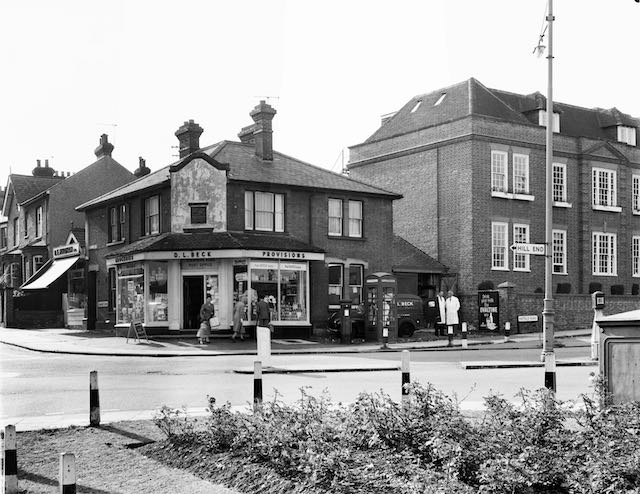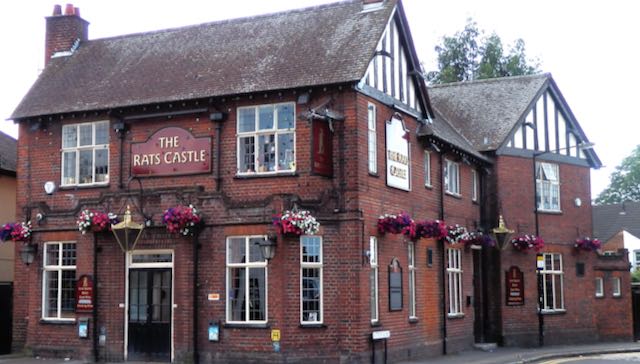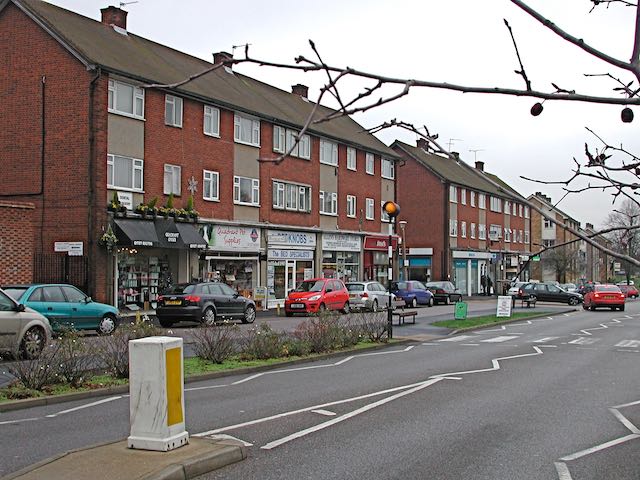During the past two months I have identified for everyone data on a range of buildings which no longer exist, and which from my research no-one thought to photograph, or if they did those pictures have not survived. We therefore have little or no memory of what they might have looked like.
I've nowhere near finished this collection, but when I do I will offer reminders of buildings no longer existing but where, fortunately, photos were taken and still act as a point of reference for all of us.
Meanwhile, back to the challenge of locating buildings long since gone; not just one this time, but a whole group scattered around our East End. Smaller than your average house and definitely not intended for permanent occupation; all erected in the late 1930s and demolished at various times in the 1950s. They were variously street shelters, police cabins, and Air Raid Precautions Wardens boxes. All constructed using stock bricks and with flat reinforced concrete roofs.
 |
| Street shelter surviving until at least the 1980s; not St Albans. |
 |
| Street shelters built on the roadway of a city residential area; not St Albans. |
Intending to provide emergency shelter to those caught in the road spaces when bomb warning sirens sounded, the last two surviving street shelters (though these were not actually on a street) remain on Fleetville Rec, part of the present Fleetville Community Centre and serving to protect nursery children and their teachers between 1942 and 1945. The days of these old structures are now numbered as demolition is imminent, but we are fortunate in having a selection of archive photos, one of which is shown below.
Among the structures demolished decades ago were street shelters in Beechwood Avenue (near Hatfield Road); Sandpit Lane (junction with Homewood Road); Sandpit Lane (The Wick); Colney Heath Lane (junction with Hatfield Road); Camp Road (junction with Campfield Road); Cambridge Road (junction with present Ashley Road); Clarence Park (football area); Sandpit Lane (junction with Lemsford Road); Royal Road (six in-line in the road space).
Of course, we might query why anyone in the 1940s would bother to take photographs of these rather plain and obviously temporary buildings, especially as most residents or travellers who were persuaded to shelter in any of them, will undoubtedly have negative experiences of the damp, dark and cold conditions, not to ignore how unsafe users might have felt sharing a dark windowless space with complete strangers.
 |
| A police reporting cabin stood at the junction of Beechwood Avenue and Hatfield Road. A street shelter was constructed nearby just to the left of the photo in Beechwood Avenue. COURTESY PHILIP ORDE |
Police cabins were not so numerous, intending to be a reporting base for duty beat officers to avoid the necessity of returning to the Victoria Street police station at the end of a shift. These cabins also housed a public telephone accessible from the outside. Fortunately a photo is in the public domain of the Hatfield Road/Beechwood Avenue cabin before it was taken down. What does not appear in the record is a photo of the early iteration of this brick box, which is the early wooden version on the Sutton Road/Hatfield Road corner; although the former GPO archive has an excellent picture of a similar cabin in a different district of St Albans.
Air Raid Precautions wardens were also provided with brick built boxes which acted as mini offices and provided with electric light and heating, and a telephone connection. They were much smaller than a street shelter, but most of their locations have not survived human memory. The former locations of four are certain: Beaumont School (driveway from Oakwood Drive); Fleetville Rec (next to the public toilets, now Beech Tree Cafe); Marshalls Drive (the Wick); and probably at Oaklands (location unknown). It is also possible that two others existed, at the junction of Camp Road and Campfield Road, and at Windermere Avenue (where the north side Keswick Close homes are today).
So, the second question which needs answering: why would we need to retain images of these former inconsequential structures? What value would they have for us now or in the future? For the same reason former streams which no longer flow on the surface; stands of trees or wider woodlands which have long since been removed for their timber; or missing stone or metal milestones which are now obsolete, replaced by our widespread use of electronic maps and vehicle odometers.
They represent individual items of the wider story of the district; they form the chapter headings for how life gradually changes as progress continues to be made; or as an immediate response to circumstances inflicted by outside circumstances. When some of the evidence is permanently lost our understanding of a community is diminished.
So we will maintain our vigilance for the recovery of the historical record, won't we?










































.jpeg)




